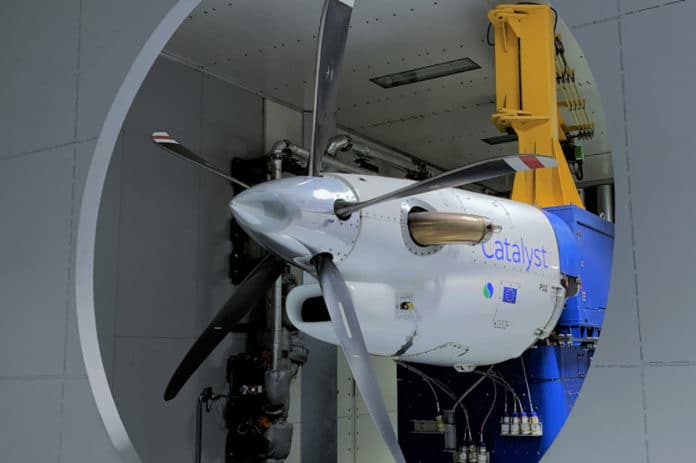Airbus has selected Avio Aero from Italy to power the Euromale RPAS (Remotely Piloted Aerial System), also known as the Eurodrone, with its engine and propeller solution, dubbed Catalyst. Under the agreement, the aviation company will provide 120 engines for the Eurodrone unmanned aerial system, as well as maintenance and service operations.
The Catalyst engine claims to be the first turboprop in aviation history that’s made with 3D-printed components. This lighter, more efficient engine delivers up to 20% lower fuel consumption and 10% more cruising power than competitors in its class, with an overall pressure ratio of 16:1, which is considered best-in-class. In addition, it is capable of providing up to 10% more payload or a range of three more hours on a typical UAV mission compared to current turboprop engines.
The Catalyst engine is also equipped with FADEC (Full Authority Digital Engine Control), which is the integrated propeller and engine control system that provides the pilot with better control and greater responsiveness and simplifies integration between the propeller and avionics in case of remote piloting.
“The Catalyst was identified as the best solution based on superior performance, lower developmental risk, better in-service economics, as well as growth potential. In line with customer requirements, Catalyst will offer a truly European solution and will thus contribute to the overall role of Eurodrone as an enabler of strategic autonomy”, said Jean-Brice Dumont, Head of Military Aircraft at Airbus Defence and Space.
Eurodrone is a twin-turboprop MALE (Medium Altitude Long Endurance) UAV intended for long-endurance intelligence, surveillance and reconnaissance, and ground support with precision-guided weapons. Developed jointly with Germany, France, Italy, and Spain, the military drone will be able to reach a top speed of 500 km/h (310 mph) with a payload of 2,300 kg. On 24 February 2022, the development and production contract was approved, with the prototype’s first flight scheduled before 2027.
